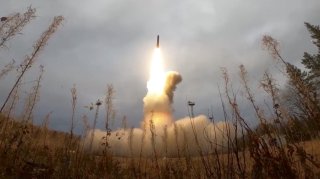Disaster Averted: How the World Nearly Ended on October 28, 1962
JFK’s lesson stands: “Above all, while defending our own vital interests, nuclear powers must avert those confrontations which bring an adversary to a choice of either a humiliating retreat or a nuclear war.”
At 9 am on the morning of Sunday, October 28, 1962, Radio Moscow transmitted Nikita Khrushchev’s intention to dismantle the missiles he had placed in Cuba and return them to the Soviet Union.
President John F. Kennedy got the good news when he returned from Sunday morning mass at St. Stephen’s Church in Foggy Bottom. McGeorge Bundy remarked, “Everybody knows who were the hawks and who were the doves. Today was the day of the doves.”
The day could have turned out differently. The Joint Chiefs of Staff (JCS) was poised to execute OPLAN 312 and OPLAN 316: massive airstrikes on the missile sites followed by a full-scale invasion of Cuba. The airstrike plan called for fifty-two land and carrier-based aircraft to launch initial strikes on Cuban surface-to-air missile sites and anti-air guns. Subsequent sorties of up to 470 aircraft would mop up enemy aircraft and then eliminate the four concentrations of intercontinental and medium-range ballistic missile (MRBM) sites at San Cristobal, Guanajay, Sagua La Grande, and Remedios. Concluding sorties would seek and destroy Soviet and Cuban ground forces.
The invasion plan called for two airborne divisions to parachute into the vicinity of Havana and assault the city from the north and south. Shortly after, the 2nd Marine Division would land on the beaches east of Havana. Ultimately, between five and eighteen divisions were to be committed to the fight as the invasion force proceeded east along the length of the island.
These measures would likely have been taken—even though intelligence delivered to the JCS on Saturday night showed “that the canvas is off the launchers, that the missiles are on the launchers, and that a reload capability is ready.” All MRBM sites were judged to be operational.
U.S. intelligence was unaware that roughly 100 tactical nuclear weapons were in Cuba under the control of local Russian commanders. Even if the airstrikes had been 100 percent effective at eliminating the ballistic missile sites, the U.S. invasion force would have been incinerated on the beaches—if it had even reached the beaches.
Also unknown to U.S. intelligence, Soviet Foxtrot-class submarines in the vicinity of Cuba were armed with nuclear-tipped torpedoes. Soviet commanders also had two regiments of nuclear-tipped anti-ship missiles aimed north toward the United States. Formations of transport ships carrying American soldiers and tanks may have been sunk in the Florida Straits.
From there, the conflict may have escalated to Soviet strikes on Jupiter missile sites in Turkey, triggering Article V of the North Atlantic Treaty, leading almost inexorably to a superpower exchange of intercontinental ballistic missiles.
So, JFK’s lesson stands: “Above all, while defending our own vital interests, nuclear powers must avert those confrontations which bring an adversary to a choice of either a humiliating retreat or a nuclear war.”
Evan Sankey is Senior Research Associate on the Avoiding Great Power War Project at the Belfer Center for Science and International Affairs.
Image: Reuters.

